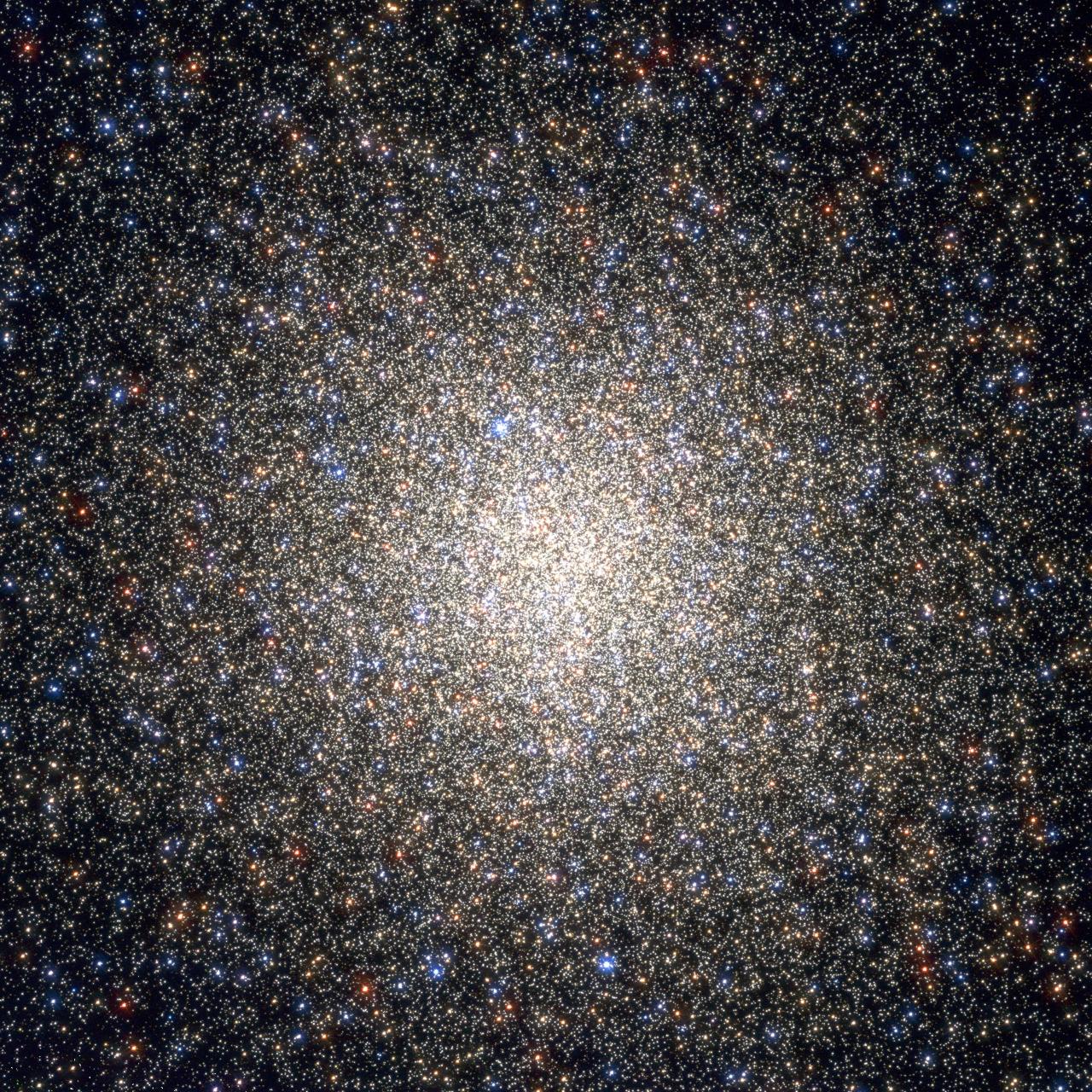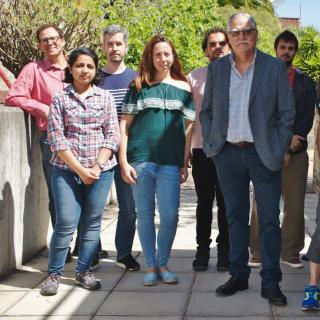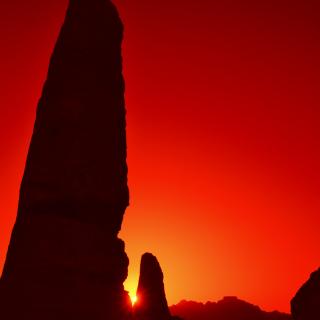Subvenciones relacionadas:
General
El objetivo general del Proyecto es el estudio de la estructura, historia evolutiva y proceso de formación de galaxias a través de sus poblaciones estelares resueltas, tanto a partir de fotometría como espectroscopia. El proyecto puede dividirse en cuatro líneas principales:
I. Historia de formación estelar en el Grupo Local.
El objetivo de esta línea es la caracterización de la estructura espacio-temporal de las galaxias del Grupo Local mediante la observación de sus estrellas individuales. Un objetivo fundamental es la determinación de las historias de la formación estelar (HFE) detalladas y extendidas a toda la historia evolutiva de la galaxia con objeto de determinar el grado de importancia que los procesos cosmológicos (tales como la reionización o self-shielding) o locales (barrido de gas por supernovas, fuerzas de marea, migración estelar) tuvieron en su formación.
II. Multipoblaciones estelares en cúmulos globulares.
De forma contraria al paradigma clásico, hay evidencias de que los cúmulos globulares (CG) albergan más de una población estelar de diferente composición química. Observaciones fotométricas de los CG usando el HST muestran fuertes evidencias de múltiples secuencias principales en el DCM. El objetivo de la línea es caracterizar dichas multipoblaciones en CG.
III. Formación y estructura de la Vía Láctea.
Esta línea tiene como eje principal el estudio de la Vía Láctea a través de los datos que proporcionará GAIA (espacio) y el survey ESO-VVV . Este tipo de datos van a dar una oportunidad única de conocer la historia de formación estelar en el disco y en el bulbo galáctico. En este marco, es necesario adecuar las herramientas desarrolladas por nuestro grupo para el análisis de poblaciones estelares al tipo de datos que está suministrando ambos surveys.
IV. Evolución estelar y diagrama color-magnitud sintético.
Nuestro grupo ha liderado el desarrollo de una nueva librería de evolución estelar. Hay una necesidad en la comunidad científica de mejorar la confianza y exactitud de la computación de modelos estelares mediante la incorporación de las últimas mejoras en el campo de la física tales como la Ecuación de Estado, nuevos cálculos en tablas de opacidades o en secciones nucleares effectivas.
Miembros
Resultados
- Desarrollo de la web http://basti-iac.oa-teramo.inaf.it de la librería BaSTI
- Obtención de fotometría PSF en el IR próximo de la región completa del disco galáctico procedente de VVV (220 grados cuadrados entre 294.7° ≤ l ≤ 350.0° y |b| ≤ 2.25°) en J y K
- Elaboración de una base de datos completa de "mapas cromosómicos", de acceso público, para todos los objetos del "HST Legacy Project on Globular Clusters".
- Determinación de las Historias de Formación Estelar de tres galaxias ultra-débiles (UFD): Bootes I, Canes Venatici II y Leo IV
Actividad científica
Publicaciones relacionadas
-
The GAPS programme with HARPS-N at TNG. V. A comprehensive analysis of the XO-2 stellar and planetary systems
Aims: XO-2 is the first confirmed wide stellar binary system where the almost twin components XO-2N and XO-2S have planets, and it is a peculiar laboratory in which to investigate the diversity of planetary systems. This stimulated a detailed characterization study of the stellar and planetary components based on new observations. Methods: We
Damasso, M. et al.Fecha de publicación:
32015 -
The Hubble Space Telescope UV Legacy Survey of Galactic Globular Clusters. I. Overview of the Project and Detection of Multiple Stellar Populations
In this paper we describe a new UV-initiative Hubble Space Telescope project (GO-13297) that will complement the existing F606W and F814W database of the Advanced Camera for Surveys Globular Cluster (GC) Treasury by imaging most of its clusters through UV/blue WFC3/UVIS filters F275W, F336W, and F438W. This “magic trio” of filters has shown an
Piotto, G. et al.Fecha de publicación:
32015 -
The Hubble Space Telescope UV Legacy Survey of galactic globular clusters - II. The seven stellar populations of NGC 7089 (M2)⋆
We present high-precision multiband photometry for the globular cluster (GC) M2. We combine the analysis of the photometric data obtained from the Hubble Space Telescope UV Legacy Survey of Galactic GCs GO-13297, with chemical abundances by Yong et al., and compare the photometry with models in order to analyse the multiple stellar sequences we
Milone, A. P. et al.Fecha de publicación:
22015 -
The nature and origin of substructure in the outskirts of M31 - II. Detailed star formation histories
While wide-field surveys of M31 have revealed much substructure at large radii, understanding the nature and origin of this material is not straightforward from morphology alone. Using deep Hubble Space Telescope/Advanced Camera for Surveys data, we have derived further constraints in the form of quantitative star formation histories (SFHs) for 14
Bernard, E. J. et al.Fecha de publicación:
12015 -
A state-of-the-art analysis of the dwarf irregular galaxy NGC 6822
We present a detailed photometric study of the dwarf irregular galaxy NGC 6822 aimed at investigating the properties of its stellar populations and, in particular, the presence of stellar radial gradients. Our goal is to analyse the stellar populations in six fields, which cover the whole bar of this dwarf galaxy. We derived the quantitative star
Aparicio, A. et al.Fecha de publicación:
122014 -
On the missing second generation AGB stars in NGC 6752
In recent years the view of Galactic globular clusters as simple stellar populations has changed dramatically, it is now thought that basically all globular clusters host multiple stellar populations, each with its own chemical abundance pattern and colour-magnitude diagram sequence. Recent spectroscopic observations of asymptotic giant branch
Cassisi, S. et al.Fecha de publicación:
112014 -
The Carina Project. VII. Toward the Breaking of the Age-Metallicity Degeneracy of Red Giant Branch Stars Using the C U, B, I Index
We present an analysis of photometric and spectroscopic data of the Carina dSph galaxy, testing a new approach similar to that used to disentangle multiple populations in Galactic globular clusters (GCs). We show that a proper color combination is able to separate a significant fraction of the red giant branch (RGB) of the two main Carina
Monelli, M. et al.Fecha de publicación:
122014 -
Adventures of a tidally induced bar
Using N-body simulations, we study the properties of a bar induced in a discy dwarf galaxy as a result of tidal interaction with the Milky Way. The bar forms at the first pericentre passage and survives until the end of the evolution at 10 Gyr. Fourier decomposition of the bar reveals that only even modes are significant and preserve a hierarchy so
Łokas, E. L. et al.Fecha de publicación:
122014 -
Delayed Star Formation in Isolated Dwarf galaxies: Hubble Space Telescope Star Formation History of the Aquarius Dwarf Irregular
We have obtained deep images of the highly isolated (d = 1 Mpc) Aquarius dwarf irregular galaxy (DDO 210) with the Hubble Space Telescope Advanced Camera for Surveys. The resulting color-magnitude diagram (CMD) reaches more than a magnitude below the oldest main-sequence turnoff, allowing us to derive the star formation history (SFH) over the
Cole, A. A. et al.Fecha de publicación:
112014 -
Andromeda II as a merger remnant
Using N-body simulations, we study the origin of prolate rotation observed in the kinematic data for Andromeda II (And II), a dwarf spheroidal satellite of M31. We propose an evolutionary model for the origin of And II involving a merger between two discy dwarf galaxies with different disc scalelengths. The dwarfs are placed on a radial orbit
Łokas, E. L. et al.Fecha de publicación:
112014 -
The age-metallicity relationship in the Fornax spheroidal dwarf galaxy
We produce a comprehensive field star age-metallicity relationship (AMR) from the earliest epoch until ˜1 Gyr ago for three fields in the Fornax dwarf spheroidal galaxy by using VI photometric data obtained with FORS1 at the VLT. We find that the innermost one does not contain dominant very old stars (age > 12 Gyr), whereas the relatively outer
Piatti, A. E. et al.Fecha de publicación:
92014 -
The VVV Templates Project Towards an automated classification of VVV light-curves. I. Building a database of stellar variability in the near-infrared
Context. The Vista Variables in the Vía Láctea (VVV) ESO Public Survey is a variability survey of the Milky Way bulge and an adjacent section of the disk carried out from 2010 on ESO Visible and Infrared Survey Telescope for Astronomy (VISTA). The VVV survey will eventually deliver a deep near-IR atlas with photometry and positions in five
Angeloni, R. et al.Fecha de publicación:
72014 -
The halo+cluster system of the Galactic globular cluster NGC 1851
NGC 1851 is surrounded by a stellar component that extends more than 10 times beyond the tidal radius. Although the nature of this stellar structure is not known, it has been suggested to be a sparse halo of stars or associated with a stellar stream. We analyse the nature of this intriguing stellar component surrounding NGC 1851 by investigating
Marino, A. F. et al.Fecha de publicación:
82014 -
Comparing M31 and Milky Way Satellites: The Extended Star Formation Histories of Andromeda II and Andromeda XVI
We present the first comparison between the lifetime star formation histories (SFHs) of M31 and Milky Way (MW) satellites. Using the Advanced Camera for Surveys on board the Hubble Space Telescope, we obtained deep optical imaging of Andromeda II (And II; MV = -12.0 log(M sstarf/M ⊙) ~ 6.7) and Andromeda XVI (And XVI; MV = -7.5 log(M sstarf/M ⊙) ~
Weisz, D. R. et al.Fecha de publicación:
72014 -
The ACS LCID Project. X. The Star Formation History of IC 1613: Revisiting the Over-cooling Problem
We present an analysis of the star formation history (SFH) of a field near the half-light radius in the Local Group dwarf irregular galaxy IC 1613 based on deep Hubble Space Telescope Advanced Camera for Surveys imaging. Our observations reach the oldest main sequence turn-off, allowing a time resolution at the oldest ages of ~1 Gyr. Our analysis
Skillman, E. D. et al.Fecha de publicación:
52014 -
Global and Nonglobal Parameters of Horizontal-branch Morphology of Globular Clusters
The horizontal-branch (HB) morphology of globular clusters (GCs) is mainly determined by metallicity. However, the fact that GCs with almost the same metallicity exhibit different HB morphologies demonstrates that at least one more parameter is needed to explain the HB morphology. It has been suggested that one of these should be a global parameter
Milone, A. P. et al.Fecha de publicación:
42014 -
The Na-O anticorrelation in horizontal branch stars. IV. M 22
We obtained high-resolution spectra for 94 candidate stars belonging to the HB of M 22 with FLAMES. Previous works have indicated that this cluster has split subgiant (SGB) and red giant branches (RGB) and hosts two different stellar populations, differing in overall metal abundance and both exhibiting a Na-O anti-correlation. The HB stars we
Gratton, R. G. et al.Fecha de publicación:
32014 -
On the Kinematic Separation of Field and Cluster Stars across the Bulge Globular NGC 6528
We present deep and precise multi-band photometry of the Galactic bulge globular cluster NGC 6528. The current data set includes optical and near-infrared images collected with ACS/WFC, WFC3/UVIS, and WFC3/IR on board the Hubble Space Telescope. The images cover a time interval of almost 10 yr, and we have been able to carry out a proper-motion
Walker, A. et al.Fecha de publicación:
22014 -
Spatially resolved LMC star formation history - I. Outside in evolution of the outer LMC disc
We study the evolution of three fields in the outer Large Magellanic Cloud (LMC) disc (Rgc = 3.5-6.2 kpc). Their star formation history indicates a stellar population gradient such that younger stellar populations are more centrally concentrated. We identify two main star-forming epochs, separated by a period of lower activity between ≃7 and ≃4 Gyr
Stetson, P. B. et al.Fecha de publicación:
22014 -
The ACS Survey of Globular Clusters. XIII. Photometric Calibration in Comparison with Stetson Standards
In this study we compare the photometric data of 34 Milky Way globular clusters, observed within the Advanced Camera for Surveys (ACS) Treasury Program (PI: A. Sarajedini) with the corresponding ground-based data, provided by the Photometric Standard Field Catalogs of Stetson. We focus on the transformation between the Hubble Space Telescope/ACS
Piotto, Giampaolo et al.Fecha de publicación:
32014



